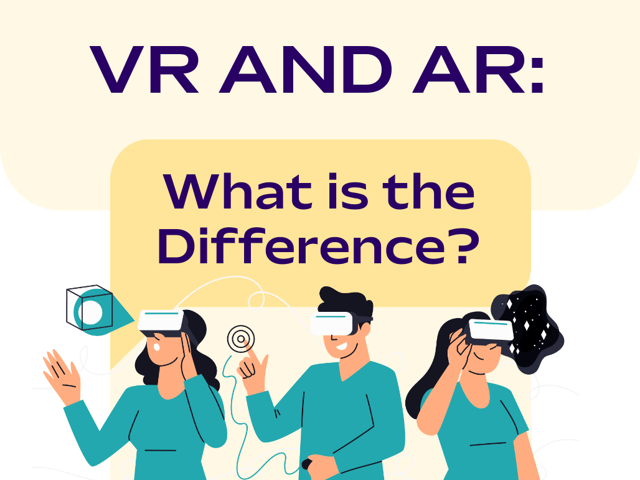
VR and AR: What Is the Difference?
VR, or virtual reality, and AR, or augmented reality, appear at first glance to be very similar. However, the truth is that there are considerable differences between the technologies.
Some Basic Differences
Virtual reality is a technological method that attempts to fully submerge the user into a completely separate reality or “world”. VR typically requires a 720p video stream and 50 Mbps for use. Augmented reality, on the other hand, uses the user’s real word surroundings and augments, or adds, an experience to it. Due to the need to digitally incorporate the user’s environment, AR typically requires a 100 Mbps connection for functionality.
Virtual Reality
To experience virtual reality, a wearable headset with earphones is used to fully enclose the user’s vision and audio experience. Virtual reality then displays a completely different environment through the visual and audio devices to transport the user to another place or time. The goal of virtual reality is full immersion into an alternate reality.
The use of VR goes beyond gaming. VR is being used in industries such as healthcare to simulate complex medical procedures for training purposes as well as in the military for combat training scenarios. VR technology is also being employed in manufacturing and education for training purposes. Retail and real estate sales are employing VR to bridge the gap between client and commodity. If you would like to tour a house across the country from the comfort of your living room, VR makes this possible.
Augmented Reality
AR is designed to enhance the world around the user. Unlike VR, AR overlays digital content onto the user’s physical environment to enhance the user’s experience. AR technology does not require specifically designed equipment and can be used on mobile devices such as smartphones or tablets.
Like VR, AR is used in multiple industries. AR is used in gaming to bring characters into the real world for enhanced interaction. The healthcare industry and the military also employ the use of AR for training, such as perfecting a procedure or scenario by using the natural environment and overlaying the desired simulation. This allows for repeated practice without real-world consequences. Retail is also taking advantage of AR by allowing a user to virtually test a product, such as a living room set, in their actual space before purchase.

Keep Reading

Computing Technology Industry Association A+ Core Series Exam Blog
What’s in the 2022 CompTIA A+ Core Series Exam Revision?
Every three years, the CompTIA exam is revised. This is not surprising …

Computing Technology Industry Association A+ Core Series Exam Blog
Is the CompTIA A+ Worth It?
While other industries are scrambling to stay afloat in today’s tumultu…

Computing Technology Industry Association A+ Core Series Exam Blog
How to Design an Effective Password Policy
A password policy is a set of rules that are placed on password creatio…